Moon’s shadow swipes Earth
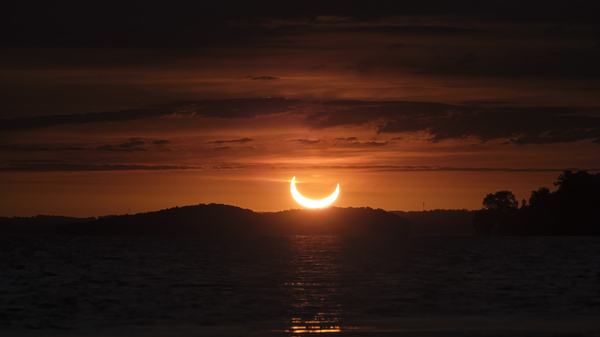
The Sun, Moon, and Earth will not be perfectly aligned on March 29. Therefore, this is a partial solar eclipse—not a total or annular eclipse.
What happens in space during a partial eclipse? The edge of the Moon’s shadow—called the penumbra—swipes the Earth. But the center of the Moon’s shadow—the umbra or antumbra, which produce total or annular eclipses—misses Earth completely.
For a partial eclipse, the point of greatest eclipse lies somewhere along the line that divides the daytime and nighttime sides of the Earth. Astronomers have an exciting name for this line: they call it the terminator.
On March 29, the point of greatest eclipse will be at sunrise in the Nunavik area of Quebec, Canada. Here, about 93% of the Sun’s disk will be covered by the Moon.
See how this eclipse will look in the Nunavik areaImportant: Be serious about eye safety
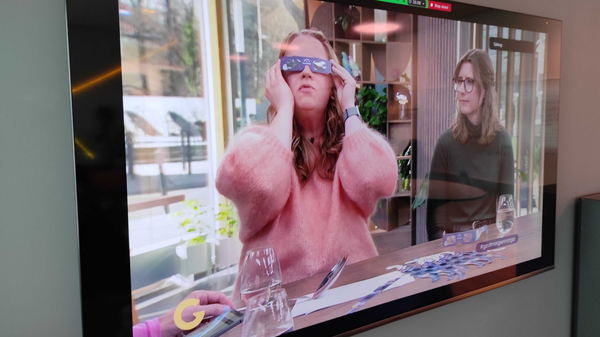
God morgen Norgeon Norway’s TV 2.
timeanddate.com’s Anne Buckle and Dr Renate Mauland-Hus appeared on God morgen Norge
(“Good Morning Norway”—a popular TV show here in our home country) to talk about the March 29 eclipse.
One of their key messages was eye safety. NEVER look directly at the Sun without proper eye protection—it can cause catastrophic eye damage.
Our mobile observatory is targeting Denmark
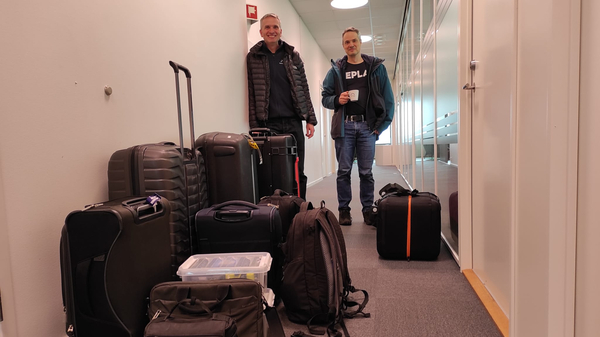
timeanddate.com’s mobile observatory team for this eclipse is the fearless duo of Steffen Thorsen—our CEO and Chief Eclipse Chaser—and Adalbert Michelic, our Infrastructure Team Lead.
They have spent the last two weeks analyzing weather models and forecasts, considering a range of potential destinations from Iceland to Sweden. We always knew this eclipse would be challenging in terms of finding clear skies—and so it has proved to be!
In the end, Steffen and Adalbert decided to target Denmark. They left our HQ in Stavanger, Norway, on the morning before the eclipse, planning to catch the afternoon ferry to Denmark. From there, they will hit the road searching for the clearest sky.
An eclipse by the bay
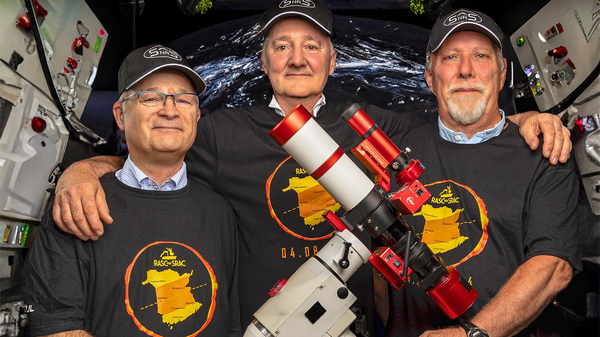
We’re excited about teaming up with new partners for this eclipse.
The historic city of Saint John in Eastern Canada is along the Bay of Fundy, which is famous for having the largest tidal range in the world. Saint John is in the area where this eclipse is at its deepest and potentially most spectacular.
Chris Curwin, Mike Powell, and Paul Owen are amateur astronomers, who for the past five years have offered The Sunday Night Astronomy Show on Chris Curwin’s Astronomy by the Bay Facebook page and YouTube channel. The three friends will be working together to offer us live views of the three-quarters eclipsed Sun as it rises above the eastern horizon—a phenomenon known as the “devil’s horns.”
Live from Tuscany

We first met Alessandro Marchini at the Europlanet Science Congress 2022 in Spain. Alessandro is the director of the Astronomical Observatory at the University of Siena in central Italy. From here, he has discovered two exoplanets, about 120 variable stars, and a dozen binary asteroids. He’s also had an asteroid—55196 Marchini—named after him.
On March 29, Alessandro will send us live images from Siena with his long-time collaborator Claudio Vallerani. As well as playing a key role in the maintenance of the observatory’s instrumentation, Claudio is an excellent astrophotographer—you can see some of his work on the observatory’s Facebook page.
How this eclipse will look in SienaIn the far North of Europe
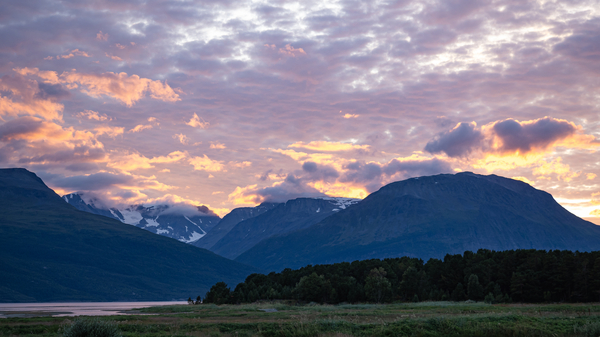
Weather permitting, we’re hoping to bring you pictures of the eclipse from Steinar Thorvaldsen, Ketil Veum, and Børge Irgens at UiT The Arctic University of Norway and Tromsø Astronomy Club.
If the clouds stay away, Ketil and Børge are hoping to send us images from UiT’s observatory in Skibotn, Norway—about 350 km (220 miles) north of the Arctic Circle. Meanwhile, Steinar will be at the opposite end of the country in Kristiansand, Norway’s southernmost city, where he is working with the Agder Astronomy Club.
See where this eclipse begins and ends in NorwayLive from the home of time
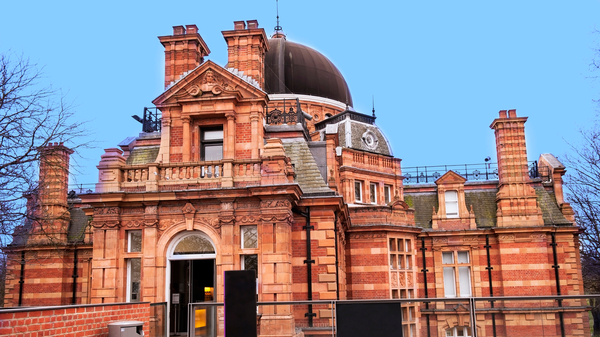
We’re privileged to once again be collaborating with the historic Royal Observatory Greenwich in London, UK, which celebrates its 350th anniversary in 2025. The Royal Observatory is home to the Prime Meridian—a line running from the North Pole to the South Pole that defines 0° longitude. It is also the home of Greenwich Mean Time (GMT), which is equivalent to the world’s time standard UTC.
In London, the partial solar eclipse will begin at 10:07 GMT and last for 1 hour, 53 minutes. At maximum eclipse, around 11:03 GMT, the Moon will cover 31% of the Sun’s disk.
A reminder to our friends in Europe: The day after the eclipse, most European countries will put their clocks forward one hour for Daylight Saving Time (DST). In the UK, local time will shift from GMT to British Summer Time (BST).
From the Mediterranean coast
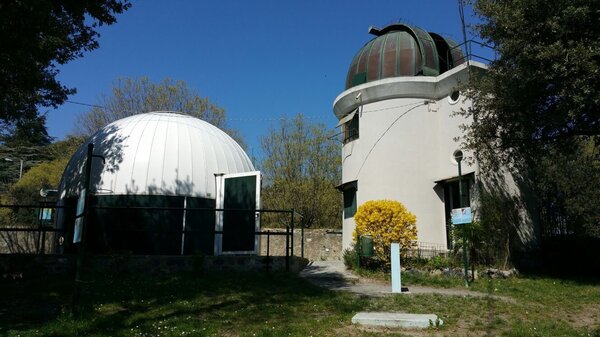
Walter Riva is the director of the Osservatorio Astronomico del Righi in Genoa, Italy. His team will be sending us images of a 9% partial eclipse from this beautiful spot on the Italian Riviera.
This will be timeanddate.com’s first collaboration with Walter. We were connected through our friends at INAF, the Italian National Institute for Astrophysics.
Looking ahead, we’re part of the Scientific Organizing Committee for a session co-chaired by INAF’s Claudia Mignone and Federico Di Giacomo at this year’s European Astronomical Society Annual Meeting in Cork, Ireland. The title of the session is Engaging the European public with the wonder of upcoming solar eclipses
—such as the August 2026 total eclipse across Iceland and Spain.


